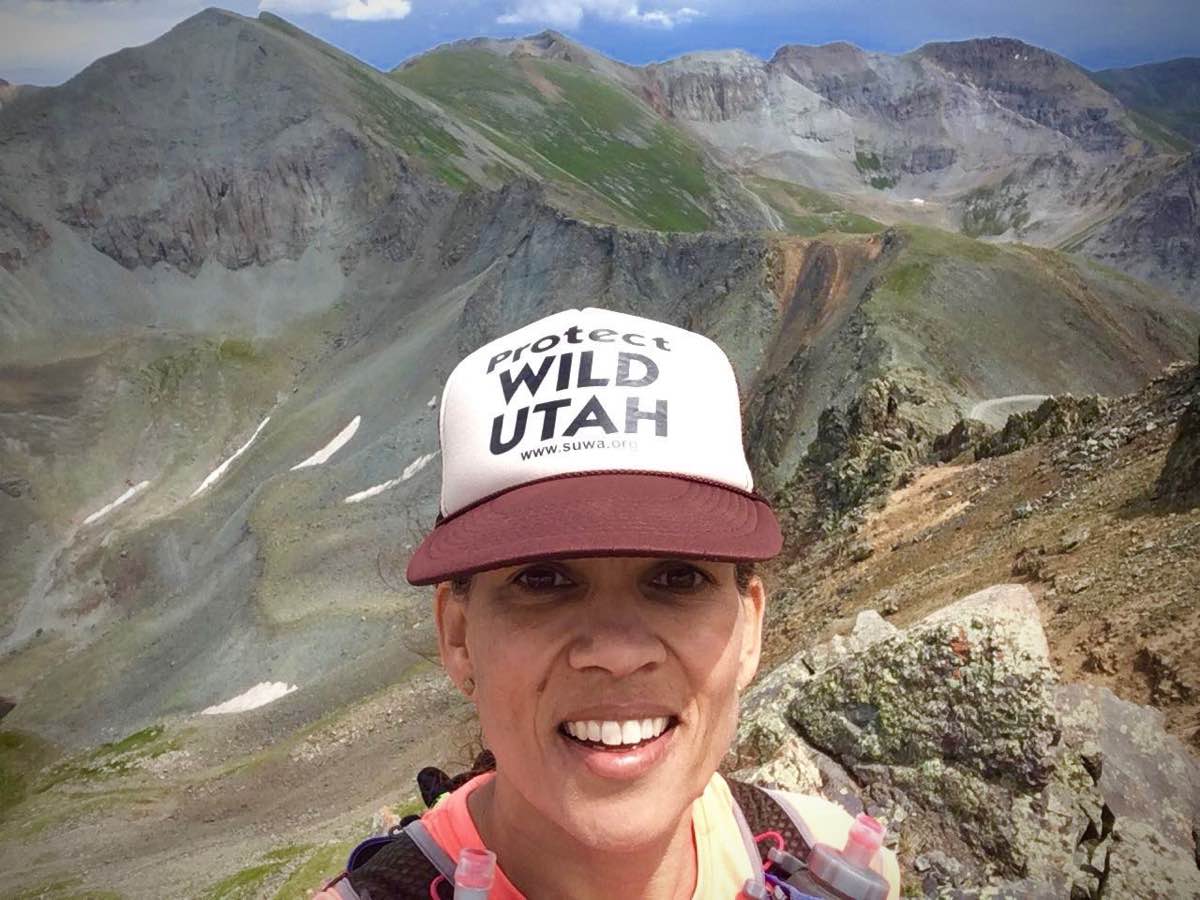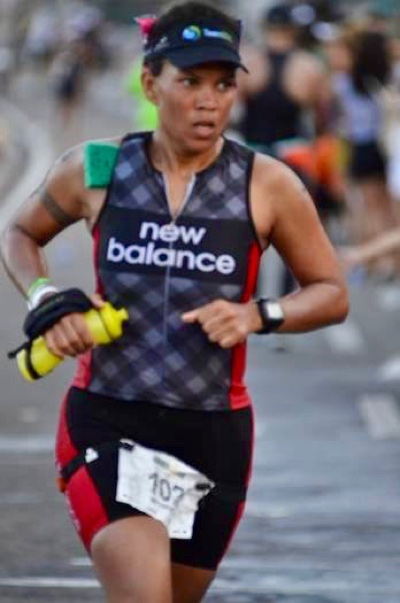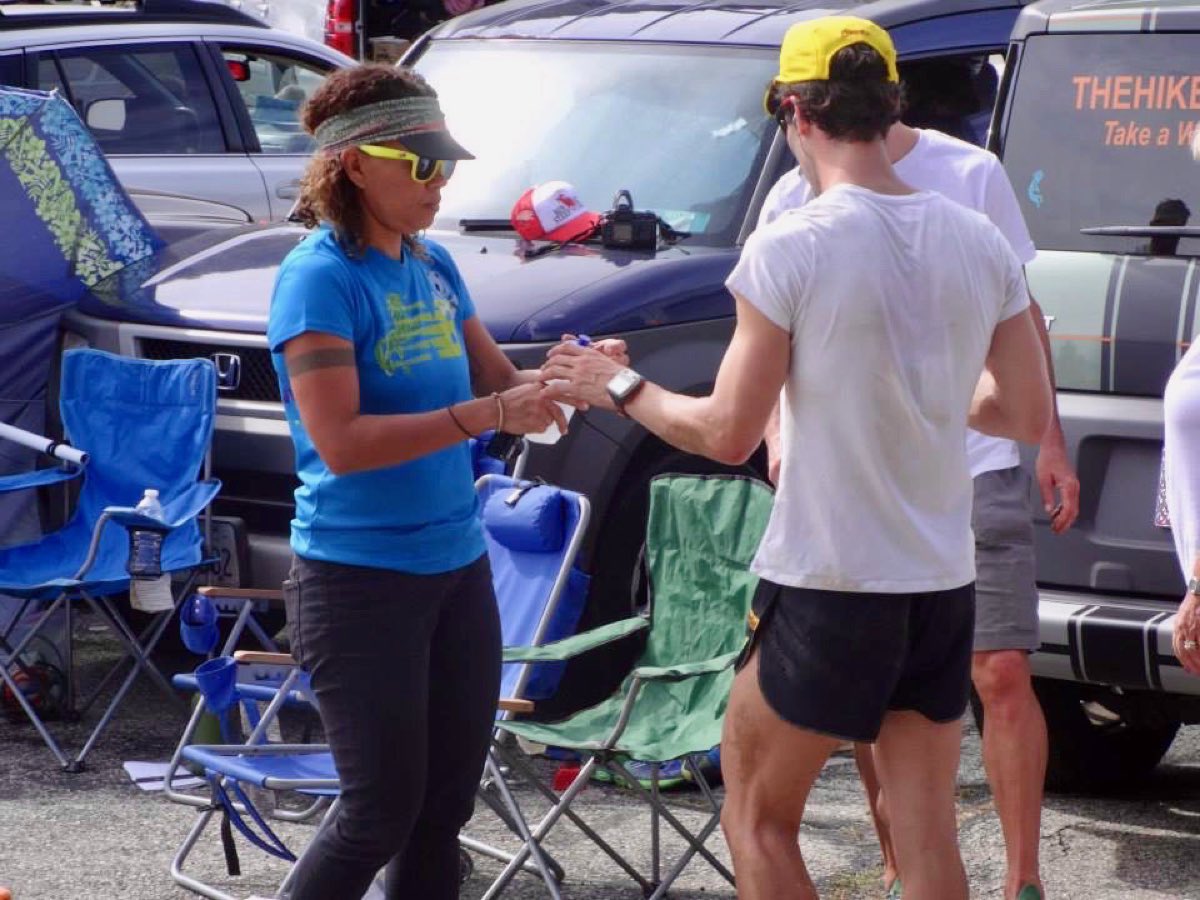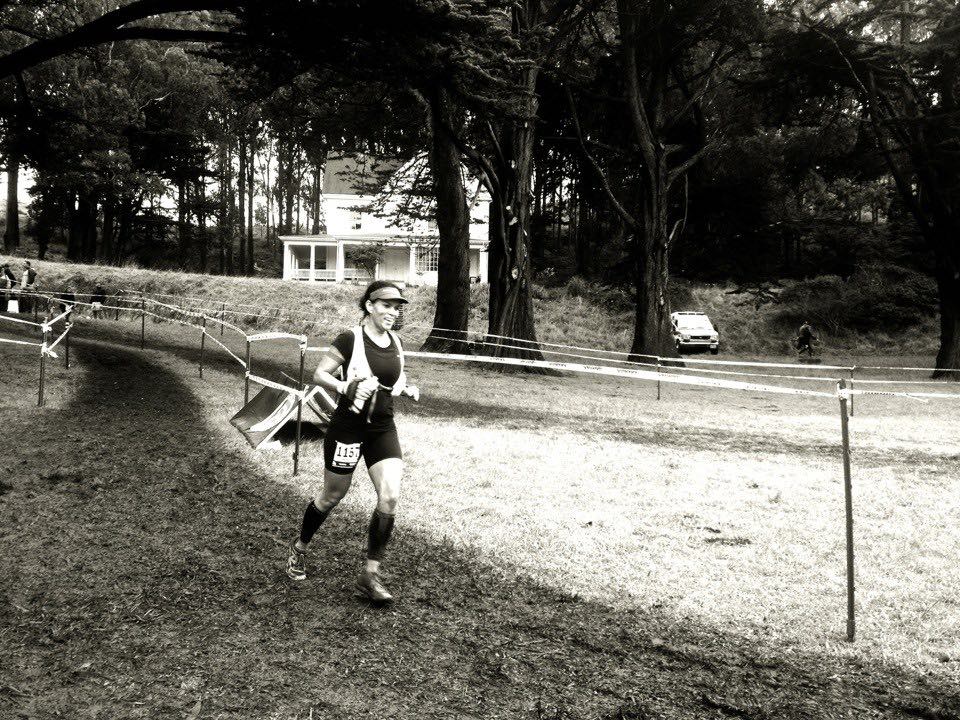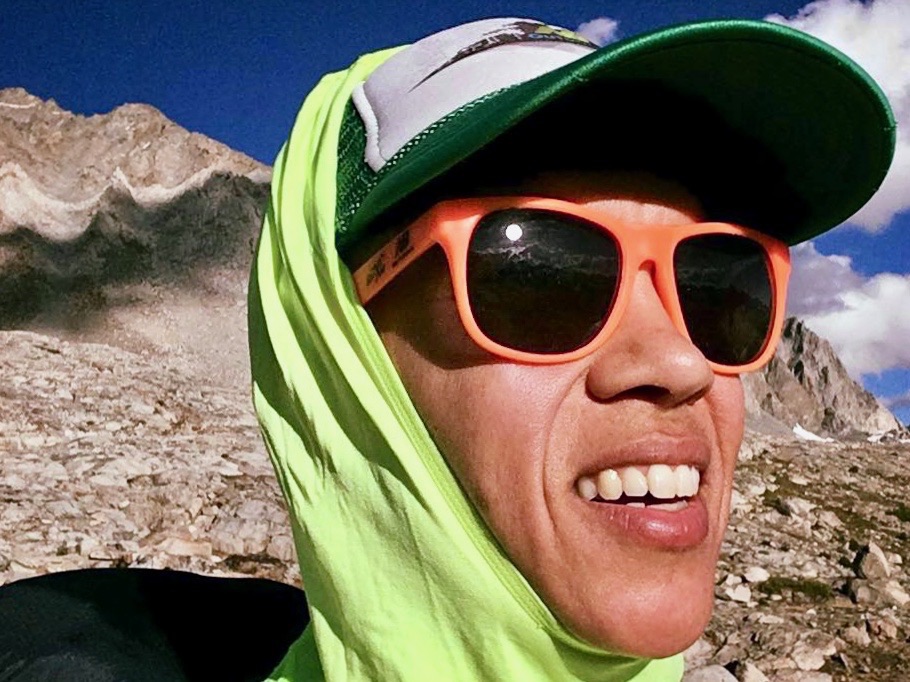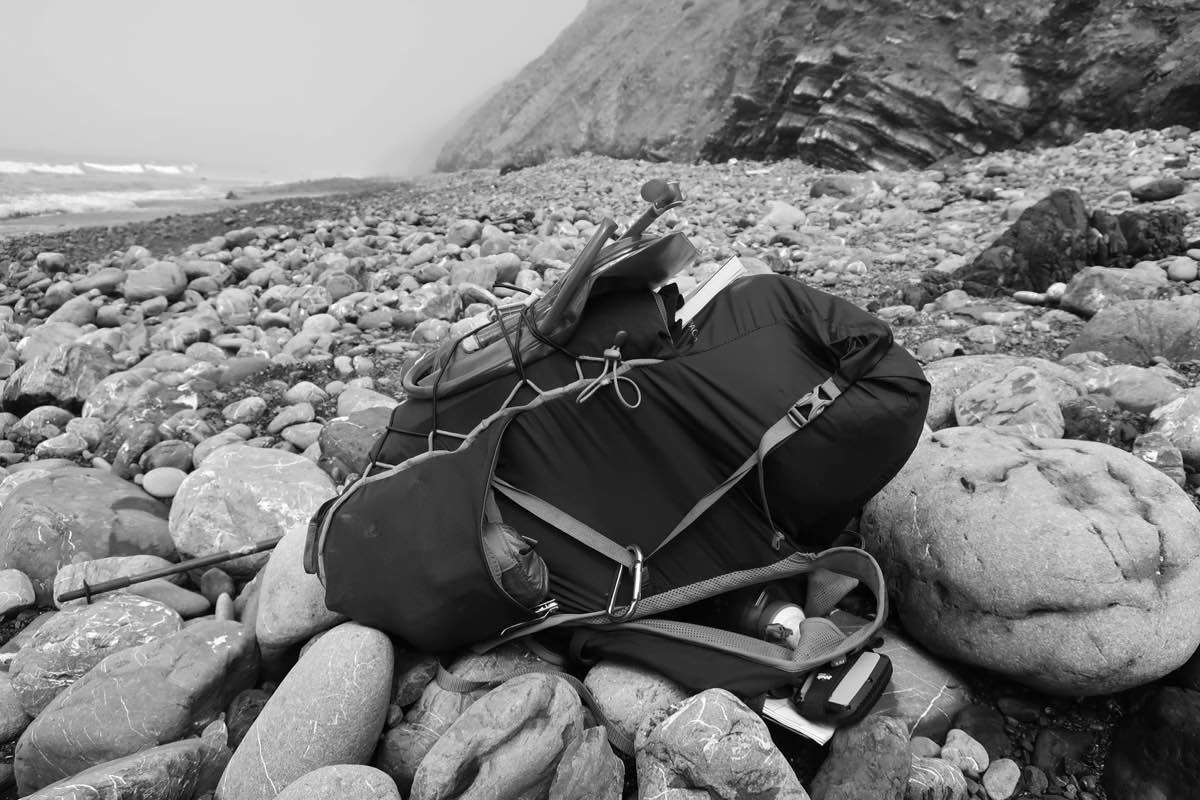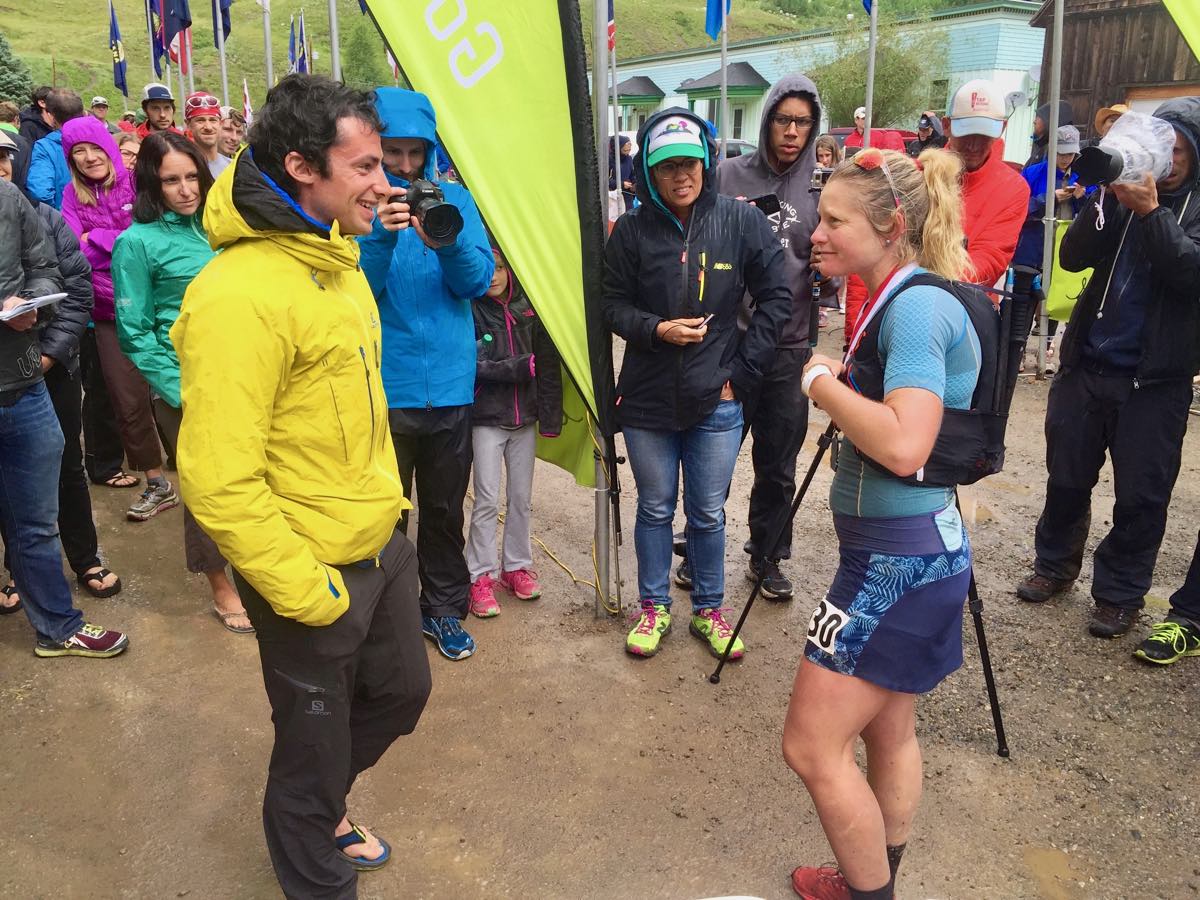If you’re familiar with the U.S. ultrarunning community, then you probably know of California’s Monica Morant. You might know her as the energetic New Balance Run Specialty Account Manager for northern California. Or you may have seen her on the sidelines of races, crewing friends to ultra success and acting as an effervescent matriarch to everyone. And you might have seen her with a bib pinned on, smiling her way through her own race. But if we rewind history to meet Morant a few decades ago, we would have encountered an entirely different woman. Even she says that she never would have guessed the person she’d become today.
“I was a photography major and worked on that path for several years as a lighting director and commercial photographer. I smoked half a pack of cigarettes a day. If you told me that I’d someday run marathons, ultramarathons, and triathlons and work for running-shoe company, I would’ve laughed and said, ‘Nah, that’s not my plan,’” she tells me over the phone during our interview.
At seven years old, a cyst grew in her femur and shattered the bone. She was in and out of the hospital and treated very delicately during that time. “I couldn’t participate in P.E. in school, and I had to wait for the graft to heal. I was treated as this kid who might break. When you’re a kid, you believe those things. For a while I didn’t run because I couldn’t, and then didn’t like running even when I could. As I grew up, I mostly swam and played soccer. I ended up being a goal keeper—I still didn’t run, and I was a bigger kid,” says Morant.
But in the year 2000, at age 29, Morant’s life began a radical shift. She’d just returned home from a photography project in Cuba and was living with her mom. “I had not a pot to piss in, in terms of money. I saw an ad in the paper to train for the Chicago Marathon as part of an HIV and AIDS charity drive. I thought, This is how I can make a difference, is to run this race. Since AIDS has directly affected my family and community, this is my chance to pick up the torch and raise the money I can’t donate. A friend had done the race the year before, and I didn’t have money to give. [Making this choice] changed the course of my life,” says Morant, who has one cousin who passed away from AIDS and another who is HIV positive.
“My cousin has lived with HIV for 20 years through the miracle of medical care. Part of fundraising for AIDS is changing the stigma. It’s a win-win. You’re doing something for others and getting so much in return,” she says. “The marathon part was so far out of my realm of possibility, but I needed something of that magnitude to grab onto then. I trained for six months with my fellow pace-group members and ran the Chicago Marathon in October of 2000. It was so transformative that I came back and coached for the same organization for 11 more years and coached nearly 1,000 participants,” Morant says. The following year, in 2001, she ran the LA Marathon.
Throughout her childhood, Morant lived on and near California beaches. “Most people live in one suburb of Los Angeles and have for generations. But my mom worked in the city government and did census work, so we relocated wherever her job took her: Redondo Beach, Hermosa Beach, and Manhattan Beach during my formative years and then we moved inland. My love for the ocean and connection to the water came from those years,” says Morant.
Soon, she realized–with that lifetime love of water–she also wanted to run a triathlon. “When I got into triathlon, I said I’d never do an Ironman. I’d maybe do a half Ironman. But you start hanging out with equally crazy, ambitious, and adventure-seeking people. I started meeting everyday people—like one woman in her 70s who goes to Ironman Kona every year—and thought, Maybe I can do this.”
Indeed, she could–and can. To date, she’s run 10 marathons, many triathlons, three 50k trail races, one 50 miler, and four full Ironman events.
Morant’s inner gills also at least partially inspired her most recent major life adventure. This summer, she moved into an 800-square-foot houseboat with her boyfriend, in Mill Valley, on the south end of Marin County, north of the Golden Gate Bridge. The couple is docked next door to Sausalito and only two minutes from the famous San Francisco Running Company and its robust trail running and ultrarunning community.
“I’m close to the Marin Headlands and the beach. Here, I get the trails and the water,” she says, and notes, “This is the first-time ever in my life that I’ve lived with a boyfriend. I made it 47 years. I’m an independent spirit. Some days, I say, ‘I need my alone time.’ And, I moved in with him, so he had to make room for me, while I purged to not bring everything but the kitchen sink with me,” the 48-year-old reflects.
Trail and outdoor time, especially long training runs, has evolved into more than just a sport and a way for her to use her own hobby to help others. With sport, she has also learned to help herself.
“Movement is my medicine and the outdoors is my church. I have lived with depression, which running helps me to manage. Running is, more than anything else, about mental health. When I go out there, I want to get my thoughts out and hear my own breath,” she says. Morant was first diagnosed with depression in her twenties, and circled through a variety of medications. After she started running, she saw the correlation between her ability to thrive and the activity.
“I successfully managed depression with medication for a few years. Then I started to feel like a lab rat going from one medication to another and the various side effects. When I met with my doctor, who also did triathlons, I told her about my training. She said, ‘Why don’t we try to go off these?’ I’ve been off the medications ever since…. I don’t want to stigmatize medication or criticize anyone who uses it. For me, I’m much happier and it’s easy to manage the depression when I stay on a schedule with being out in the mountains,” she says. The structure and focus of training for a race goal provides Morant with a progressive, positive mental and emotional cycle. “When I struggle with a workout, I learn something. I adjust and reassess, and I go back out and eventually get it right or at least get it better. When I get myself to the top of a summit and look out to a beautiful vista, I think, I got myself here. These legs and this body did this. All of this transfers to managing depression.”
If it seems that running has been catalytic in Morant’s life, you are right. But we’re not done yet. Running also facilitated her career in the run industry.
“Through coaching and connecting more with the running world, knowing the retailers that would take care of our runners, is how I landed at New Balance in 2010. Over those years, I also started running trails and getting involved personally with the community—it wasn’t just a job,” she says. When she took her first role at New Balance, the brand’s marketing team didn’t have the bandwidth to manage their six athletes, so Morant volunteered for the role, for fun: “I was looking for a new challenge, and I loved it. I managed shipping them their gear, kept a calendar of their races, and I’d take vacation time to be at the races. I was the mom getting them what they needed. [At the same time, I was] terribly inspired by them,” says Morant.
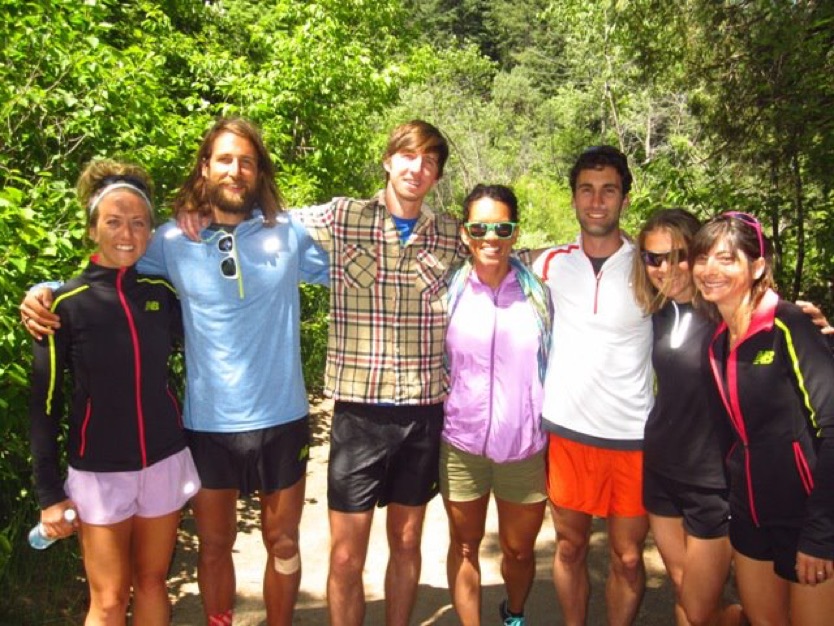
At the 2012 New Balance team summit in Colorado. Left to right are Katie Grossman, Anton Krupicka, Erik Skaggs, Monica, Dominic Grossman, Brandy Erholtz, and Liza Howard.
“Most people thought that Monica was helping and crewing at so many races through her job with New Balance, but the reality was that she was often traveling to these races on her own time and dime. My husband, Dominic [Grossman], and I have been lucky to have her crewing us for some of the biggest and most successful races of our lives,” says New Balance Ambassador Katie Grossman and adds, “But the real victory was in convincing Monica to run a 50 miler…. It’s one thing to witness greatness in others, but to find it in yourself is truly life-altering.”
At one of Morant’s first meet-ups with the athletes she was managing, New Balance Ambassador Dominic Grossman, told her, “‘We’ve been talking about it all week, we’re loving this experience, and we think you’re going to do great as the manager. But if you really are going to manage us, you’ve gotta’ run an ultra. You’re going to do The North Face 50k – California and we’re going to coach you,’” laughs Morant, who did train for that event and shared the coaching experience via social media. “Training for your first 50k publicly is kind of silly, but I’m always willing to be the experiment. I’m a proud middle- to end-of-packer,” she says.
The next year, she returned to do the 50-mile distance that’s part of the same weekend event, The North Face Endurance Challenge 50 Mile Championships and had a rough day.
“At mile 11, I had lightning shards of cramping. I could walk uphill and couldn’t run downhill. I hadn’t considered that I’d need to know cutoffs and was chasing them all day. Katie Grossman paced me. After missing the cutoff, I wanted to continue without aid, so we death marched it in. I reached the finish line deflated. That race haunts me,” she says.
“The word that best describes Monica is ‘tenacious.’ She’s a fierce athlete herself. She fights for what she believes in, and she will always go to bat for the rights and dreams of the people she holds close. Monica is also incredibly outgoing, friendly, and has a zest for life that is easily fueled by ultrarunning’s unique cast of characters,” says Katie Grossman.
“Every time I go to crew, [I become so inspired that] I think I’m probably going to do a 100 miler. But I have more experience crewing, pacing, and hugging everyone I see. Aside from racing, the community of people who runs trails are stewards of the land. It’s a lovely community, and I plan to be in this world the rest of my life,” says Morant.
The sentiment is mutual. “We call her ‘Momica’ and she truly is the best,” says Darcy Piceu, who recruited Morant to crew her for her successful supported John Muir Trail (JMT) fastest known time (FKT) attempt in California in 2017. Piceu and Morant met when they both volunteered one year for a Team Red, White & Blue Trail Running Camp for military veterans. “Her nonstop positive energy is one of a kind. She is up for anything and always brings a smile. Monica crewed me on the JMT and at the Angeles Crest 100 Mile. I hope I get to repay her whenever she needs me. That’s what this community is all about. She embodies all that is good about this sport,” she says.
During Piceu’s three-plus-day FKT attempt, Morant needed to leave one trailhead at midnight in order to reach Piceu at a designated on-the-trail location and time.
“The experience of crewing Darcy’s FKT was life-altering for me. It was not a race situation. It’s a much more quiet experience. There are no crowd or bibs. It’s a group of people supporting this one person’s achievement,” says Morant, who says she has a deep-seated fear of bears. Walking on an established trail alone and at night brought that anxiety to the surface. “I’d walk by what I thought was a meadow with bear eyes and it’s a lake with stars reflecting in the water,” Morant laughs, now. Without the daylight, she’d often step off-route and need to find the trail again, which was discouraging. Despite those challenges, she arrived at the meeting point just in time to crew Piceu.
“I reminded myself, I have to get to someone who’s depending on me. It proved to me that I’m capable of so much more,” she says. Morant’s solo night hike in the Sierra Nevada to crew for Piceu sparked in her a new idea. She decided to try multi-day fastpacking, and took her first trip, solo, on the northern section of the Lost Coast in northern California. Next up, she’d love to fastpack California’s High Sierra Trail.
Though she loves nature and time outside, Morant recognizes that people of color are less regularly exposed to the outdoors.
“‘Blacks don’t camp.’ ‘Black people can’t swim.’ I’ve heard these stereotypes all my life and not just from whites but also from black folks, as well. There’s a really shameful history of slavery behind those realities. The woods was where we were taken to be lynched. Slaves were not allowed to learn how to swim, so that if they attempted to escape, they’d drown. Other slaves watched this in terror. This painful legacy has been embedded in our psyche for generations and become tropes that we have long accepted or come to believe about ourselves. We need to have uncomfortable conversations with each other to work through that past,” says Morant.
She says, “I’ve always loved the outdoors from childhood. My father took us camping and I skied as a kid.” Her father grew up in Vicksburg, Mississippi from the mid ’40s to the late ’60s, when he joined the Air Force. “He’s shared stories with me about living in the segregated south and some pretty horrific instances of being terrorized as a young boy. Despite all that, he persevered and after he left the Air Force and the Vietnam War, he knew there was more out there for him. He was often one of the very few black men to be doing whatever he was doing, from drag racing funny cars in southern California to skiing in Chamonix, France. My dad really wanted to expose his kids to all that he could,” Morant explains.
Those experiences outdoors helped shaped who she is and gave her unique avenues to explore in life. And now, she wants to help others experience them, too.
She continues, “It’s my responsibility to bring more people of color to the [running] community. I’d like to see us in the outdoors becoming the norm and less the exception. Representation absolutely matters. Studies have shown that black students who have black teachers are more likely to go to college. Black students and kids need to be exposed to more of what those of us are doing in the outdoors and envision themselves there with us.”

At the 2015 Leadville Trail 100 Mile. Left to right is Liza Howard, Monica, and Gina Lucrezi. Photo: iRunFar/Meghan Hicks
When Morant lived in Oakland, she lived just a couple minutes away from open spaces in which she ran. She lived in a predominantly black and brown community but never saw people of color in those hills. Also, when she lived in northeast L.A. in a predominantly Latino community, she didn’t see any people of color in the mountains, which are visible in every direction from the city.
“We need to bring people of color to the mountains and forests. We need people to understand that it belongs to all of us. Some people just aren’t comfortable,” says Morant. She recalls an instance when she volunteered at an Oakland high school for seniors who were preparing for college. One black girl chose a college in Tacoma, Washington, and when Morant mentioned the beautiful trails and hiking there, the girl responded, “I don’t hike or like getting things in my hair.”
“Kids need to be brought to the outdoors. I believe we have this triangle: social justice, economic justice, and environmental justice. Some kids are missing that third part. It’s important to bring more kids to outdoors and mountains to understand it’s our responsibly to take care of it. That exposure also enhances their life to help the other parts of the triangle,” she says.
As for Morant, her outdoor journey continues as she has a full schedule of future racing. She’s again running The North Face 50k – California in November, the 2020 Orcas Island 50k, and The North Face Endurance Challenge 50 Mile Championships also in 2020. Morant says, “I look at those mountains every day out my window. The North Face 50 Mile is the monkey on my back.”
Call for Comments (from Meghan)
Calling all Monica Morant stories! Leave a comment to share your story of racing, crewing, or cheering with ‘Momica.’ Thanks!
